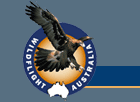Postcards Catalogue
|
page
7of 7
|
|
Image
|
Item No
|
Item Details
|
Image
|
Item No
|
Item Details
|
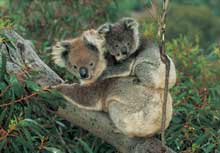 |
502
|
Koala with Baby Phascolarctos cinereus
High in a gum tree a female carries her offspring on her back even though
it is almost ready for independence. Koalas are solitary animals and are
rarely seen together in the same tree.

|
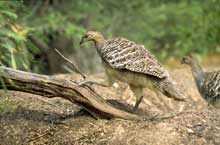
|
541
|
Malleefowl Leipoa ocellata
A female malleefowl tried each day when she came in to remove a dead branch
from the rim of her nest. The male, in the background, with his grey chest,
worked tirelessly on temperature control by opening and closing the mound.
He used more and more hot sand to maintain the temperature as the summer
progressed and the fermenting vegetable matter in the mound cooled.

|
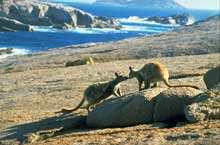 |
542
|
Pearson-Island Rock-wallaby Petrogale pearsoni
This is a prelude to a fight for survival. Water beneath this rock holds
the key to the survival of these beautiful creatures. After this greeting
the larger, more dominant wallaby drove the smaller one away. Limited
water supplies and survival of the strongest control the population and
prevent overpopulation on the island. Lens 80 mm.
|
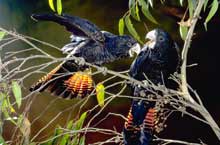
|
543
|
Red-tailed Black-cockatoo Calyptorhynchus banksii
An immature female begs for food from a young male. Stringy bark seeds
form part of the diet in the group in Western Victoria.
Lens 200 mm.
|
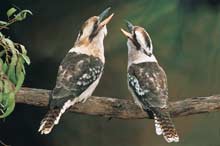 |
546
|
Laughing Kookaburra Dacelo novaeguineae
A pair of kookaburras 'laughing' together. Family groups often gather
at potential nest sites and vantage points within their territory and
join in a raucous chorus.
|
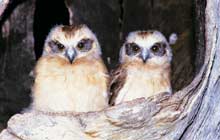
|
549
|
Boobook Owl Ninox novaeseelandiae
Two young boobooks look out into the world a few days before fledging.
They were evicted from their nest hollow by a swarm of feral honeybees
the following day. Luckily they could just fly and escaped, unlike many
young birds that are the indirect victims of apiarists who do not manage
their hives well.
|
|
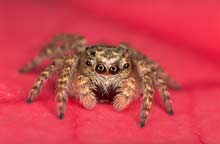
|
550
|
Jumping Spider Clynotis sp
This jumping spider is only 5 mm long. Luckily the only spiders in Australia
that can jump are quite small and only use their special talent to escape
from predators. The background is a fallen pink gum leaf. Lens reverse
24 mm.
|
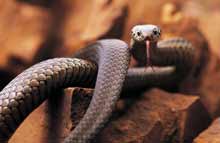
|
551
|
Copperhead Snake Austrelaps labialis
A small venomous snake found on Kangaroo Island and in the Adelaide Hills.
Its tongue is used to 'taste', or 'smell', not to bite. Threatened species
on the mainland. Lens 200 mm.
|
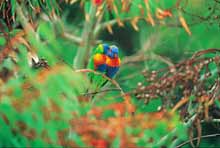 |
601
|
Rainbow Lorikeet Trichoglossus haematodus
A brilliantly coloured lorikeet found in coastal areas in northern, eastern
and southern Australia, including Tasmania. Common in suburban gardens
and parks where native trees are planted.
Lens 300 mm.
|
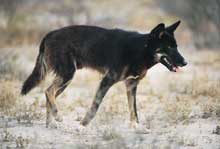
|
603
|
Black dingo Canis familiaris
Black and tan is a colour variant quite commonly seen in the Strzelecki
Desert where the dingo fence keeps them out of sheep grazing areas in
the south. Lens 300 mm.
|
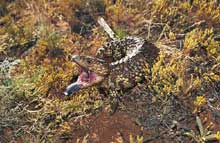 |
604
|
Shingle-Back Lizard Tiliqua rugosa
Known a 'stumpy tail', or 'sleepy' lizard in some areas, it is often seen
on roadways in the southern half of Australia. It feeds on flower heads
and fruits and leaves of native plants and insects. One was a regular
visitor to a malleefowl nest where it fed on their dung
Lens 55 mm
|
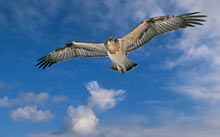
|
184
|
Osprey in flight- Pandion
Haliaetus
An immature osprey flies among the clouds above the sea watching for fish
on which it feeds exclusively
Lens 20 mm.
|
